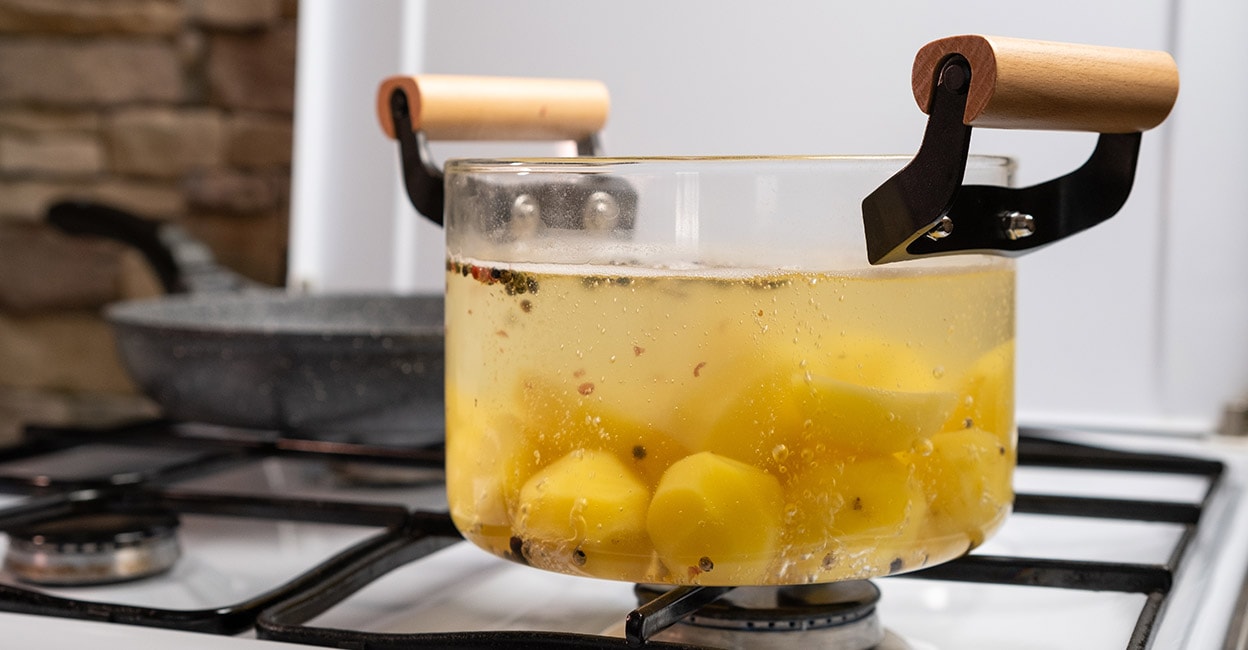That viral glass pot looks great…but can it survive your cooking?

Mail This Article
Glass pots have taken social media by storm, captivating home cooks with their aesthetically pleasing, transparent design. Watching your food simmer and bubble in real time adds an element of satisfaction to the cooking process. But while these trendy pots look stunning in the kitchen, are they practical for everyday use? And more importantly, how can you use them safely to avoid mishaps? Here’s everything you need to know before you cook with a glass pot.
Why are glass pots so popular?
Glass cookware has gained massive attention on platforms like YouTube and Instagram, where users showcase its beauty while preparing soups, stews, and pasta. The clear glass allows you to monitor the cooking process without lifting the lid, making it a visual treat. Additionally, glass pots are non-reactive, meaning they don’t absorb flavours or leach harmful chemicals into food. This makes them a great choice for health-conscious cooks.

Is a glass pot good for everyday cooking?
While glass pots are undeniably beautiful, they require extra care compared to traditional stainless steel or non-stick cookware. They can handle heat well when used correctly, but sudden temperature changes can lead to breakage. Unlike metal pots, glass ones don’t distribute heat as evenly, so you may need to adjust cooking techniques to prevent uneven cooking.
Common mistakes to avoid
Glass cookware is delicate, and improper use can cause it to shatter unexpectedly. Here are some common mistakes to watch out for:
Sudden temperature changes: One viral incident involved a user who placed an empty glass pot on a direct flame, then poured cold water into it. The result? The pot shattered immediately. This happens because glass expands when heated and contracts when cooled—rapid shifts in temperature create stress that leads to breakage.
Using high heat: Most glass pots are not designed for extreme temperatures. Stick to low or medium heat to prevent thermal shock and ensure even cooking.

Placing an empty glass pot on a hot stove: Always add liquid or food before turning on the heat. Heating an empty glass pot can cause stress fractures, making it prone to breaking when ingredients are added.
Direct flame without a diffuser: If you’re using a gas stove, consider using a heat diffuser to prevent direct contact with an open flame, which can cause uneven heating and cracks over time.
Sudden cooling: Never transfer a hot glass pot directly to a cold surface like a granite countertop or sink. Instead, let it cool gradually on a heat-resistant mat.
Tips for safe use
- To keep your glass pot in good condition, follow these essential tips:
- Always start with room-temperature ingredients and allow the pot to warm up gradually.
- Use a heat diffuser on gas stoves to minimize the risk of breakage.
- Avoid placing hot glass cookware under running cold water or in the fridge immediately after use.
- Hand wash your glass pot with mild detergent instead of using harsh scrubbers that may weaken the surface over time.
- Store glass cookware carefully, ensuring it doesn’t get knocked against harder materials that could cause chips or cracks.
Should you invest in a glass pot?
If you love the aesthetic appeal and don’t mind the extra care, a glass pot can be a great addition to your kitchen. It’s perfect for slow cooking, soups, and gentle simmering. However, if you’re looking for something highly durable and versatile, you might want to stick with traditional cookware for everyday use.

